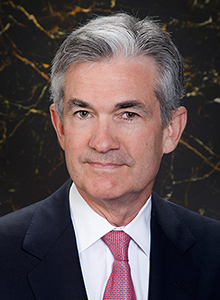Federal Open Market Committee
Originally created by the Banking Acts of 1933 and 1935, the Federal Open Market Committee continues to set monetary policy for the United States.

Interior of the Board room in the Marriner S. Eccles building
Board of Governors photo via Flickrby Federal Reserve Bank of St. Louis staff
The FOMC is the body of the Federal Reserve System that sets national monetary policy. The FOMC makes all decisions regarding the conduct of open market operations, which affect the federal funds rate (the rate at which depository institutions lend to each other), the size and composition of the Federal Reserve’s asset holdings, and communications with the public about the likely future course of monetary policy. The FOMC makes all decisions about the “stance” of U.S. monetary policy to help move the economy toward the congressionally mandated goals of maximum employment and price stability.
Congress enacted legislation that created the FOMC as part of the Federal Reserve System in 1933 and 1935.In the early years of the Fed before the creation of the FOMC, the twelve Federal Reserve Banks undertook open market operations both separately and in coordination with one another. In 1923, they formed the Open Market Investment Committee for these coordinated efforts, which was then transformed into the Open Market Policy Conference in 1930.1 A body called the Federal Open Market Committee was first convened in 1933, following the Glass-Steagall Act; but the FOMC as we know it came into effect only in March of 1936 "as constituted by Section 12A of the Federal Reserve Act as amended by the Banking Act of 1935," as the newly named chairman, Marriner Eccles, explained at that meeting.
The way the Fed conducts monetary policy and even the way it understands the economy has changed a great deal since the 1930s, but the basics of the FOMC's regular operations have stayed mostly the same.
All members of the Board of Governors and the president of the Federal Reserve Bank of New York have a permanent voting seat2 on the FOMC; the other 11 Reserve Bank presidents serve on a rotating schedule of one-year terms. By law, the FOMC determines its own internal organization and, by tradition, the FOMC elects the Chair of the Board of Governors as its chair and the president of the Federal Reserve Bank of New York as its vice chair. Although not every Fed leader votes at every FOMC meeting, each president brings their unique point of view and the perspective of their District to every meeting of the FOMC. The rotating groups are always the same:
- One president from: Boston, Philadelphia, and Richmond;
- One president from Cleveland and Chicago;
- One president from Atlanta, St. Louis, and Dallas, and
- One president from Minneapolis, Kansas City, and San Francisco.3
The FOMC holds regular meetings eight times each year—about every six weeks. Transcripts and many other historical meeting materials are available to the public on the Board of Governors' website back to 1936.4 In 2011, Chairman Ben Bernanke announced that he would hold quarterly press conferences following certain FOMC meetings. In 2019, Chair Jerome Powell began to hold those press conferences after every FOMC meeting.5
The most relevant and accurate information about the Federal Open Market Committee and its work can always be found online at federalreserve.gov.
The photo illustration for this essay, showing the room where the FOMC meets, is a U.S. government work in the public domain.
Written as of September 14, 2021. See disclaimer.
Endnotes
- 1 Riefler, Winfield W. "Open Market Investment Policy: Excerpts (1923-1928)," United States Federal Open Market Committee report, February 1956, via FRASER.
- 2 Following the passage of "An Act to amend section 12A and 19 of the Federal Reserve Act, as amended," July 7, 1942, 56 stat 648.
- 3 Board of Governors of the Federal Reserve System. "About the FOMC." Updated July 28, 2021.
- 4 Materials from the Open Market Investment Committee and the Open Market Policy Conference are now held at the National Archives. Many have been digitized and are available on FRASER.
- 5 Stierholz, Katrina. "Staff Picks: Fed Press Conferences in FRASER," Inside FRASER blog, May 8, 2019.


